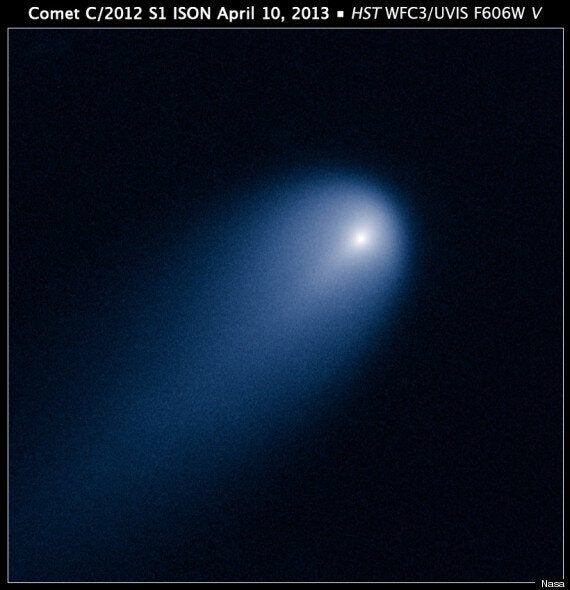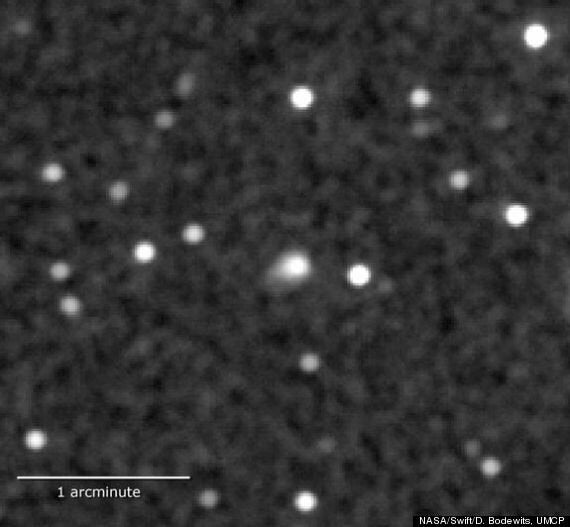A comet that could be as bright as the full Moon when it passes Earth this November has been pictured in detail for the first time.
Comet ISON was snapped by the Hubble Space Telescope earlier this month.
Although it is as far away as the orbit of Jupiter, the heat from the Sun is warm enough to have begun turning its icy body into the gases (a process called sublimation) that give comets their characteristic tail.

The image was taken in visible light and blue false color was added to bring out details in the comet structure
Although the comet, which is three or four miles long, will miss Earth, its fate is decidedly grim.
It is already showing unusually high levels of sublimation for something so far from the Sun.
As it gets closer this will only increase meaning it could very well disintegrate during its journey through the solar system.

ISON was spotted by the Swift satellite last month
The comet’s dusty coma, or head of the comet, is approximately 3,100 miles across, or 1.2 times the width of Australia. A dust tail extends more than 57,000 miles, far beyond Hubble’s field of view.
The last comet of note that was visible from Earth was C/2006 P1 in 2007. It was the brightest comet for over four decades.
The most famous comet is Halley's Comet which is visible every 75-76 years. It was last seen in 1986 and is due to pass again in July 2061.